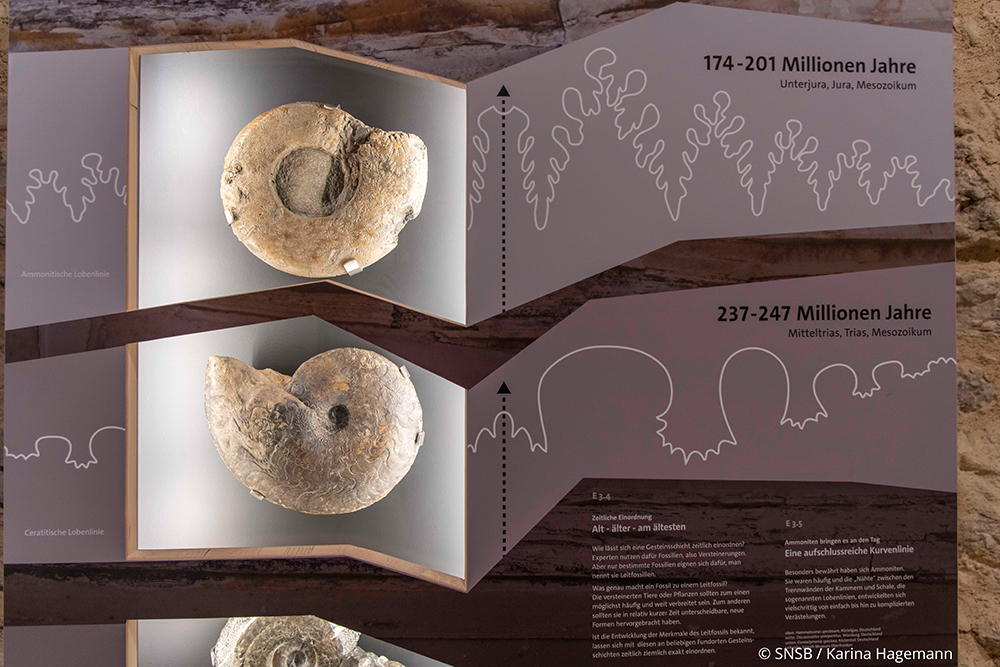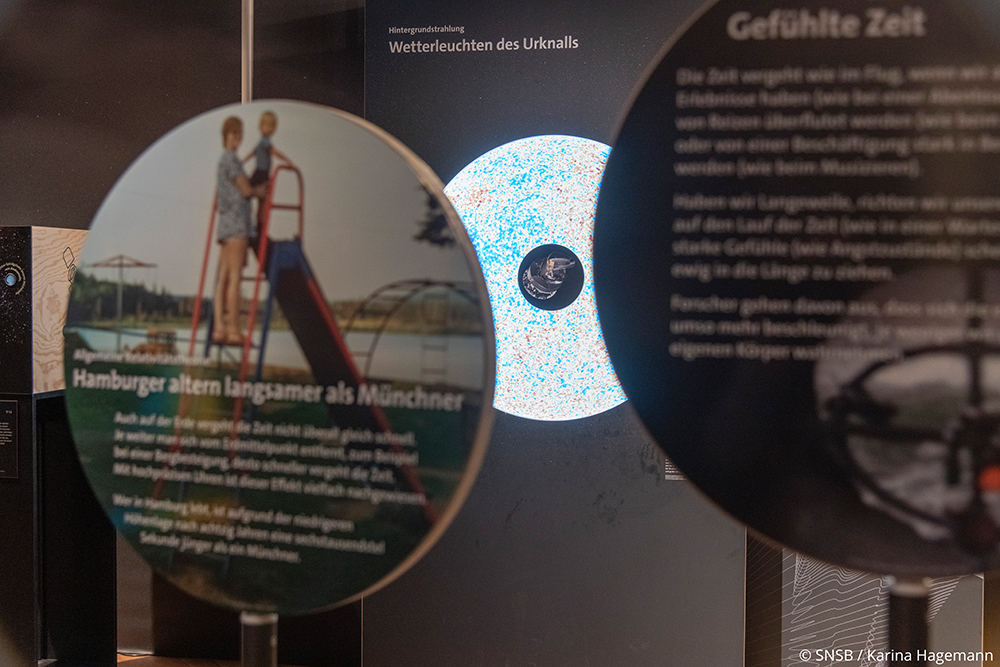„All time in the world – from the Big Bang to clock time“
1. Aug. 2024 – 30. March 2025
Time determines our lives. Almost all of us are guided by the clock day in, day out – by deadlines and schedules. We take for granted how days, weeks, months and years pass – and realise that our own lifetime is limited. Time is therefore something quite commonplace, something that affects us all directly and yet is difficult or impossible for us to understand and explain. In the exhibition ‘All time in the world’, the Bamberg Natural History Museum and the Bayreuth Prehistoric Museum are focussing on this multifaceted topic.
In the exhibition, the well-known astrophysicist and science journalist Harald Lesch accompanies visitors on their journey through time and space. Numerous exhibits, spectacular images and stagings as well as hands-on objects and special children’s stations make the exhibition an experience for young and old alike.
The content of the exhibition was developed by the Museum Mensch und Natur team together with members of the planning staff of the Bavarian Natural History Museum. The collections and regional museums of the Bavarian State Natural History Collections were also involved in the project. The exhibition is also supported by a large number of other institutions worldwide.
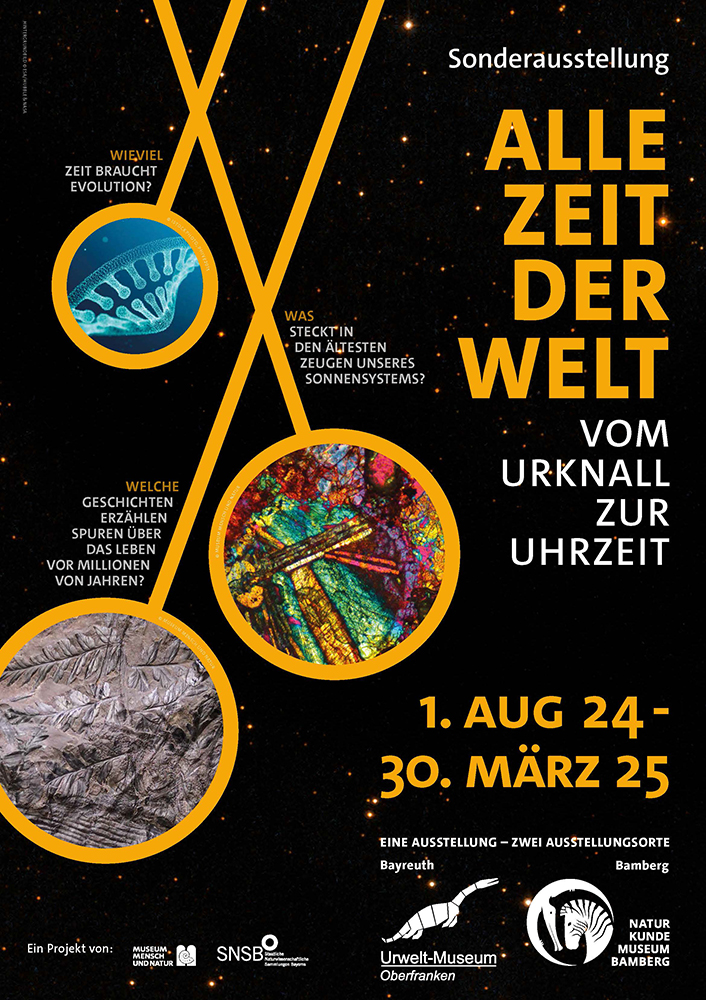
Through time and space
With an impressive installation, the exhibition takes us back to the beginning of all things – the Big Bang 13.8 billion years ago. Today, ever larger and better telescopes allow us to look not only to incredible distances, but also ever deeper into the past and thus into the early days of the universe. The history of the Earth, which was formed around 4.55 billion years ago, forms the second part of the exhibition. Among other things, the oldest minerals and rocks on earth, which are more than 4 billion years old, can be admired here. Numerous exhibits show how the earth is still in a constant process of change today and fossils show us different periods of the earth’s history.
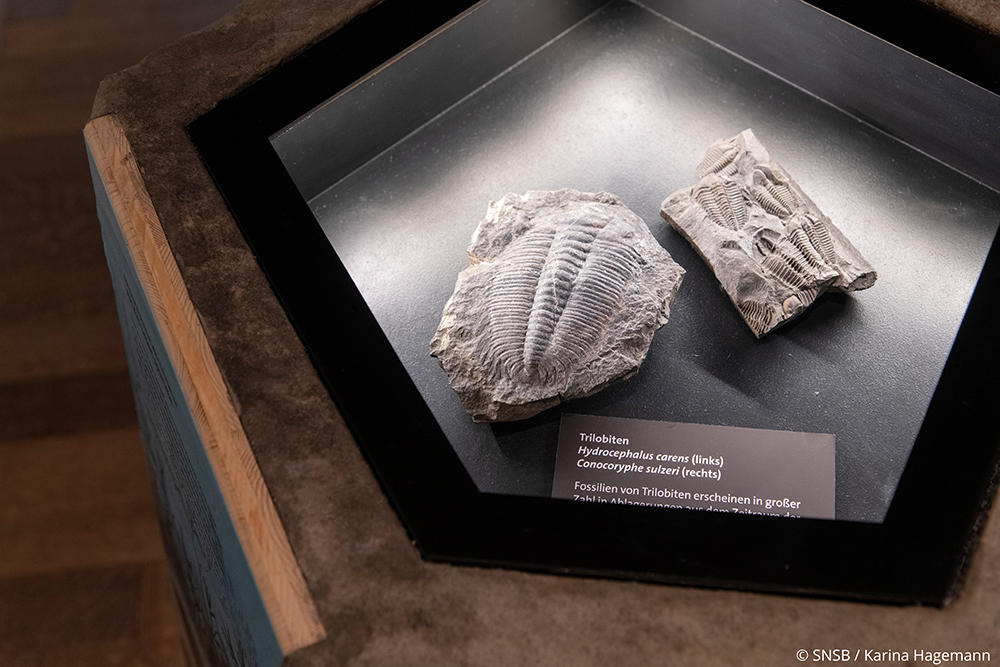
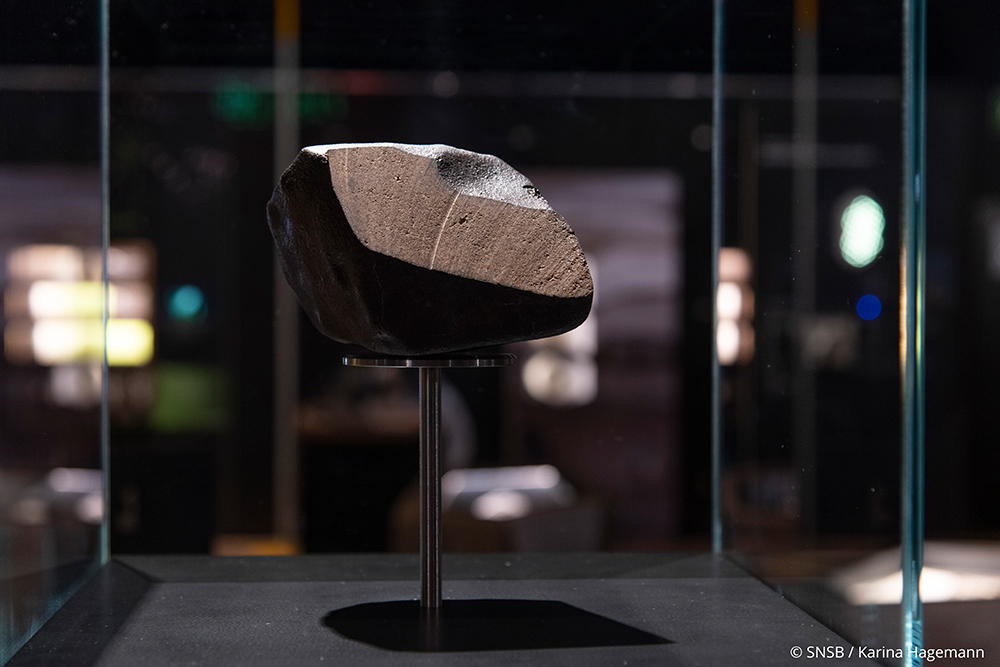
Who actually turns the internal clock?
At the same time as the Bamberg Natural History Museum, the Urwelt-Museum Oberfranken in Bayreuth is showing another aspect of the special exhibition, showing how time is an elementary factor affecting living beings and their evolution. All higher organisms go through a cycle of growth, reproduction and ageing, which ultimately leads to death. However, the duration and course of this process differ significantly – some plants and animals only live for a few weeks, while others reach an age of hundreds or even over 1,000 years. The Bayreuth exhibition shows examples of particularly extreme lifespans and developmental paths.
Visitors with an admission ticket for the other museum receive reduced admission to the current museum.
